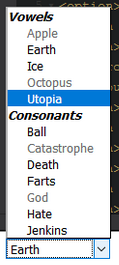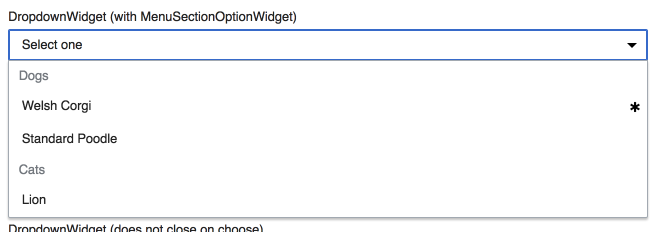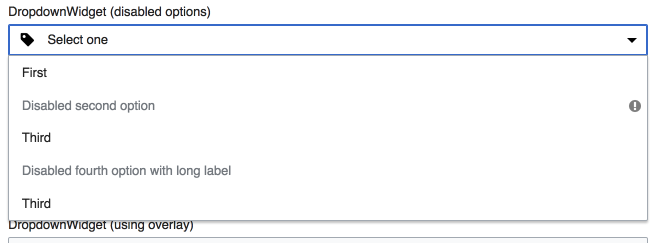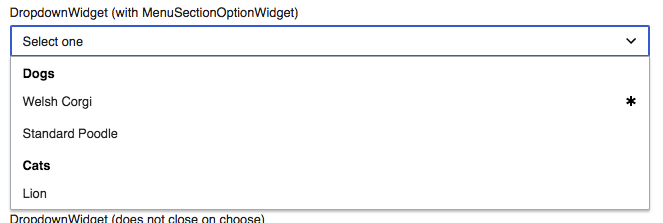MenuSectionOptionWidget is a bit wonky if you stick it in a DropdownWidget. It doesn't look much like a section header/separator.
| Apex (okay-ish) | WikimediaUI, former MediaWiki (really weird) |
|---|---|
Browser implementations (screenshots using this codepen):
| Chrome | Firefox | Edge | Safari | |
|---|---|---|---|---|
| Windows | ||||
| OS X | ||||
Also see F4695532 and F4695534 from T149452.
Agreed-on result
| WikimediaUI theme | Apex theme |
|---|---|















